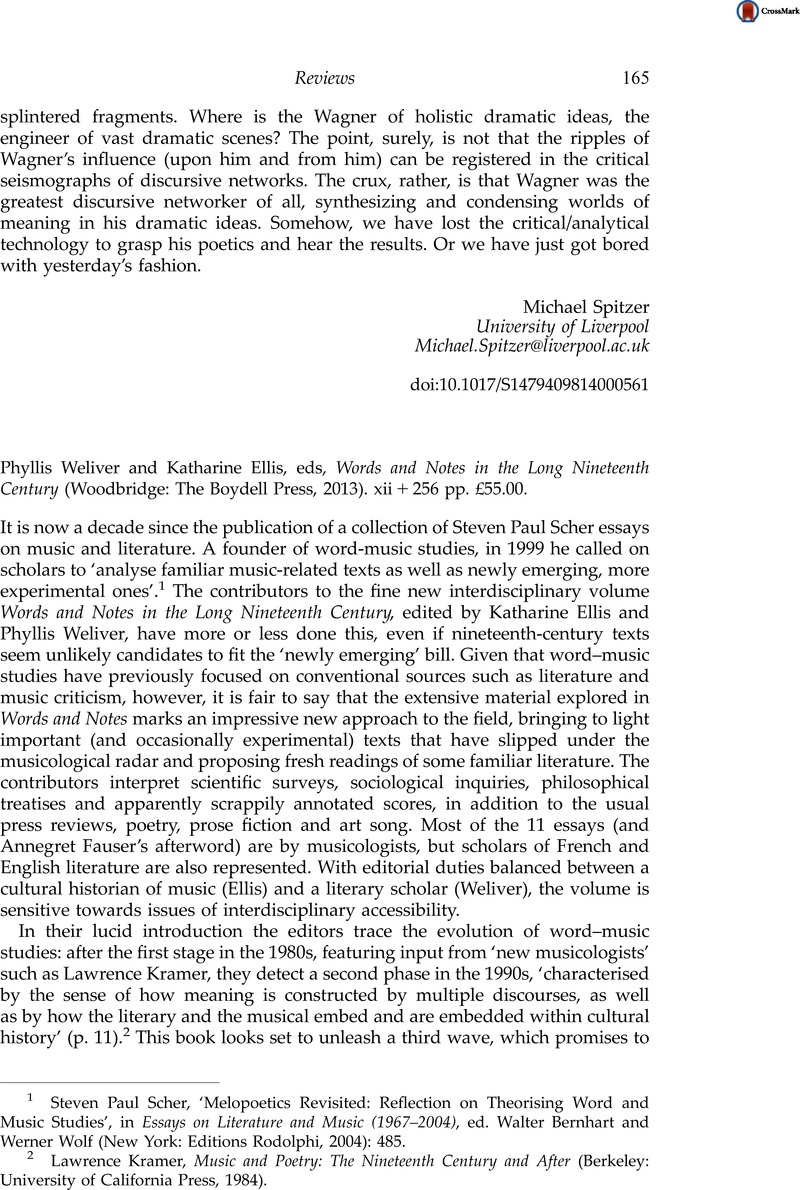No CrossRef data available.
Article contents
Phyllis Weliver and Katharine Ellis, eds, Words and Notes in the Long Nineteenth Century (Woodbridge: The Boydell Press, 2013). xii + 256 pp. £55.00.
Published online by Cambridge University Press: 24 February 2015
Abstract

- Type
- Book Reviews
- Information
- Copyright
- Copyright © Cambridge University Press 2015
References
1 Scher, Steven Paul, ‘Melopoetics Revisited: Reflection on Theorising Word and Music Studies’, in Essays on Literature and Music (1967–2004), ed. Walter Bernhart and Werner Wolf (New York: Editions Rodolphi, 2004): p. 485Google Scholar.
2 Kramer, Lawrence, Music and Poetry: The Nineteenth Century and After (Berkeley: University of California Press, 1984)Google Scholar.
3 Chapitres tournés en tous sens were not the only piano pieces by Satie to feature ‘stave words’; another important example is the group Sports et divertissements (composed in 1914 but not published until 1923). Sports et divertissements is a visual and musical album in which each of the scores is accompanied by Charles Martin's illustrations. The visual qualities permeate the music too, with Satie himself contributing the exquisite calligraphy for the titles and ‘stave words’ in the original edition. I refer to these ‘stave words’ as doodles in an effort to capture the hand-written, ostensibly spontaneous sense of these texts. For more, see Davis, Mary E., ‘Modernity à la mode: Popular Culture and Avant-Gardism in Erik Satie's Sports et divertissements’, The Musical Quarterly 83/3 (1999): 430–473CrossRefGoogle Scholar.
4 Dahlhaus, Carl, The Idea of Absolute Music, trans. Roger Lustig (Chicago: University of Chicago Press, 1991): p. 7Google Scholar.
5 See E.T.A. Hoffmann's review of Beethoven's Fifth Symphony (1810) in E.T.A. Hoffmann's Musical Writings: Kreisleriana; The Poet and The Composer; Music Criticism, ed. David Charlton (Cambridge: Cambridge University Press, 1989): pp. 234–51. The novellas in question are ‘Der Sandmann’ (1815), ‘Das Sanctus’ (1816), Das Majorat’ (1817), ‘Die Fermate’ (1815) and ‘Der Baron von B.’ (1819).



